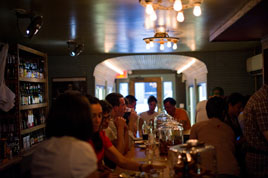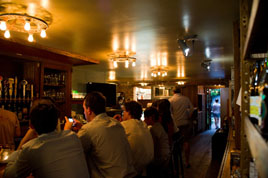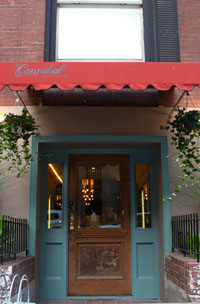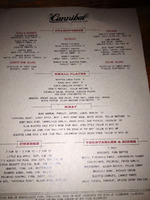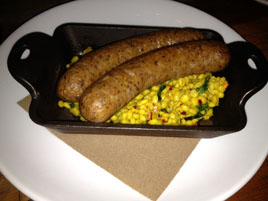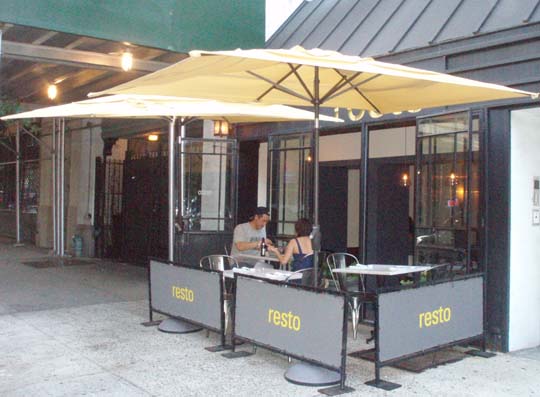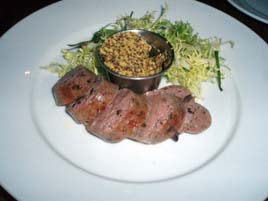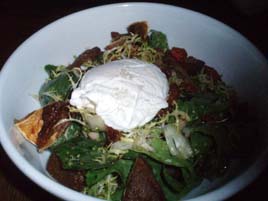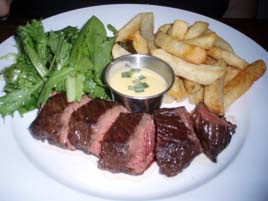The Lamb Feast at Resto
 Sunday, March 3, 2013 at 04:22PM
Sunday, March 3, 2013 at 04:22PM 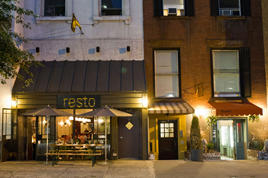

Note: Resto closed in August 2016. From the Eater.com story, it seems that the closure is just a re-branding. The space will re-open as Cannibal Liquor House, with the same executive chef as its successful sibling next door, The Cannibal. The two restaurants were always similar, but Resto was the slightly—and I do mean slightly—more formal of the pair. They will now, probably, be a lot more similar.
*
 Restaurants, unlike cats, usually don’t usually have nine lives. So it is remarkable that Resto, now on its third executive chef, is not just alive, but better than it was in 2007, when Frank Bruni of The Times gave it two stars.
Restaurants, unlike cats, usually don’t usually have nine lives. So it is remarkable that Resto, now on its third executive chef, is not just alive, but better than it was in 2007, when Frank Bruni of The Times gave it two stars.
The decision to open with Ryan Skeen, the peripatetic chef who seldom spends more than fifteen minutes at any restaurant, ought to have killed Resto if nothing else did. We visited in 2008, after Skeen’s departure, finding entrées that were pedestrian and poorly executed. But a visit late last year to the sister restaurant next door, The Cannibal, made us wonder if Resto was worth another look.
Oddly enough, we decided to visit on New Year’s Eve—a risky day at any restaurant. We paid a shade under $200 per person (tax and tip included), including wines, which the restaurant poured generously. The portions were enormous, and there wasn’t a dud among them. The couple seated next to us—strangers at the time—suggested we might like to try one of Resto’s whole animal feasts. We exchanged email addresses, and gradually assembled a party of 10 (the minimum is 8, the maximum 20). Five options are offered (beef, pig, goat, lamb, or fish), and at least one week’s notice is required.
We settled on the lamb, our New Year’s Eve server’s recommendation. The menus on the website describe them as four-course meals, but “endless” is a more apt description.
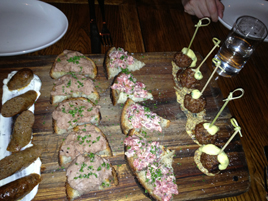
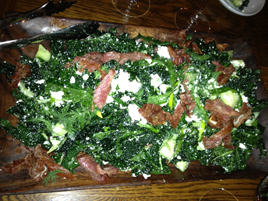
The first course was a quartet of lamb appetizers (above left): merguez sausage, lamb rillette and chives on grilled bread; lamb tartare with aioli and quail egg; and curried lamb meatball on a skewer.
A kale salad (above right) was strewn with feta, scallion, cucumber, dill, and luscious strips of lamb.
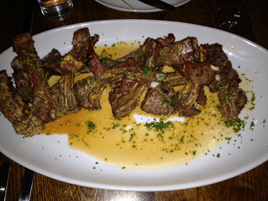
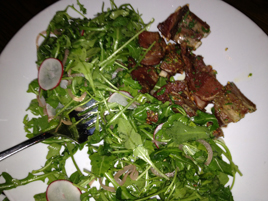
Excellent lamb ribs (above left) were served in an ancho chili with caramelized garlic. Rack of lamb (above right) didn’t really work for me, as the small lamb pieces were too chewy.


By the time roasted leg of lamb (above left) and confit lamb shoulder (above right) came out, the momentum was flagging at our table, and neither platter was finished. I thought both were quite good, but there were some whispers of dissent.
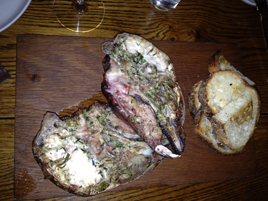
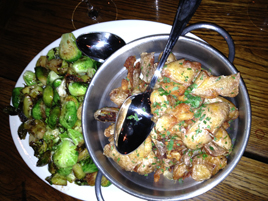
Most people took a pass on buttered lamb brains (above left), as it can be difficult to get past the fact that it’s a lamb cranium, sawed in two, with the teeth and tongue clearly visible. Once the kitchen is done roasting it, there isn’t much left of the brain, which tastes like a creamy pâté. The tongue, however, was not very good: the server explained that the high heat required to cook the brain leaves the tongue nearly inedible. There were no complaints about the vegetables (above right), roasted Brussels sprouts and crisp fingerling potatoes.
 Dessert was a first-rate apple cobbler (right), like what Mom makes at home, which is Resto’s usual way of ending one of these feasts.
Dessert was a first-rate apple cobbler (right), like what Mom makes at home, which is Resto’s usual way of ending one of these feasts.
The price was $85 per person before tax and tip, which these days is a bargain for that much food. Beverage pairings are available, but we decided to order à la carte from the wine list, which has grown over the years, and is much improved over the rather perfunctory list offered in 2008. There is also an excellent beer selection.
Naturally, one of these large feasts gets plenty of attention from the serving staff, who are knowledgeable and enthuisiastic. But it took the bar quite a while to fill a cocktail order, and there was a long pause before the final entrée course came out. The meal ended on a slightly sour note, when one of our party was refused an order of coffee, because our 2½-hour time slot was up, and they needed the table for another feast.
If Resto’s various incarnations have one thing in common, it’s owner Christian Pappanicholas’s commitment to carnivory. With the new chef Preston Clark and ex-Momofuku service whiz Cory Lane at the front-of-house, he’s finally got the right team.
Resto (111 E. 29th Street between Park & Lexington Avenues, Gramercy)
Food: Belgian for carnivores
Service: Much improved over the years, with the occasional off-note
Ambiance: Casual, and a bit noisy as the dining room fills up
Rating: ★★


